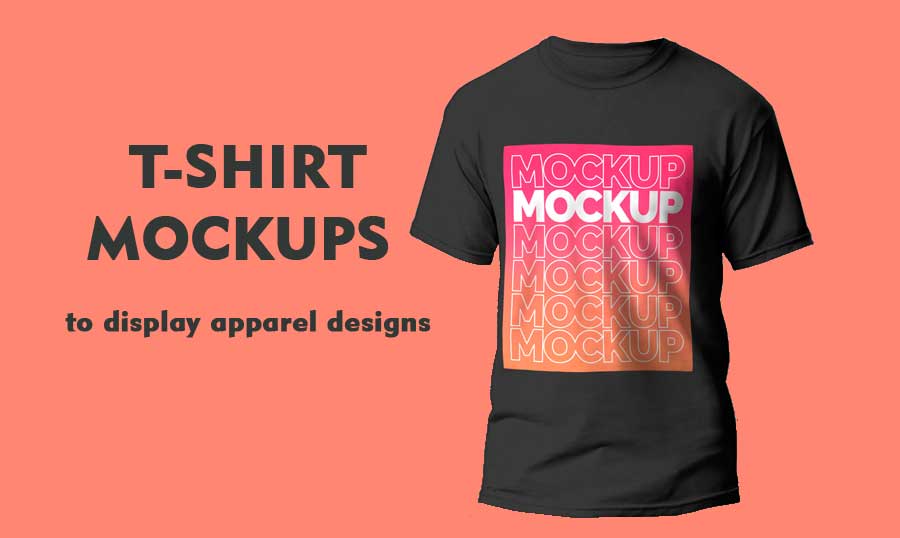
T-Shirt Mockup in Illustrator: A Comprehensive Guide for Designers
Introduction
T-shirt mockups are an indispensable tool for apparel designers, allowing them to showcase their designs in a realistic and professional manner. By leveraging the capabilities of vector-based design software like Adobe Illustrator, designers can create high-quality T-shirt mockups that effectively communicate their design concepts to clients and customers. This comprehensive guide will delve into the intricacies of creating T-shirt mockups in Illustrator, covering everything from choosing the right template to adding realistic details and customizing the mockup to suit specific requirements.
1. Choosing the Right Template
The foundation of any T-shirt mockup lies in selecting an appropriate template. Illustrator offers a range of templates, both free and premium, that cater to different T-shirt styles and design needs. Consider the following factors when choosing a template:
- T-Shirt Style: Templates come in various styles, including crew neck, V-neck, polo, and hoodies. Choose a template that aligns with the specific T-shirt design you intend to showcase.
- Design Placement: Templates typically have designated areas for front, back, and sleeve designs. Determine the placement of your design and select a template that accommodates it effectively.
- Resolution: Opt for a template with a high resolution to ensure the clarity and sharpness of your mockup.
2. Importing the Template into Illustrator
Once you have selected a suitable template, import it into Illustrator by following these steps:
- File > Open
- Navigate to the template file location
- Click Open
The template will appear as an artboard in the Illustrator workspace.
3. Customizing the T-Shirt Design
With the template imported, you can begin customizing the T-shirt design to reflect your concept.
- Color and Fabric: Use the Fill Tool (G) to change the color of the T-shirt fabric. You can also import custom fabric textures or patterns to add a realistic touch.
- Design Import: Import your T-shirt design into Illustrator and place it on the designated area of the template. Adjust the size and position as needed.
- Design Manipulation: Utilize Illustrator’s powerful tools to manipulate the design, such as scaling, rotating, and applying effects like transparency and gradients.
4. Adding Realistic Details
To enhance the realism of your T-shirt mockup, consider adding the following details:
- Wrinkles and Folds: Use the Warp Tool (Shift + R) to create natural-looking wrinkles and folds in the fabric.
- Shadows and Highlights: Apply shadows and highlights using the Gradient Tool (G) to mimic the way light interacts with the T-shirt.
- Neck and Sleeve Details: Pay attention to the neckline and sleeves, adding realistic details such as stitching and ribbed cuffs.
5. Creating a Background and Environment
The background and environment can significantly impact the overall impact of your T-shirt mockup.
- Background: Choose a background that complements the T-shirt design and adds context. You can use a solid color, gradient, or image.
- Environment: Consider adding elements such as a model, props, or a specific setting to create a more engaging and immersive mockup.
6. Exporting the Mockup
Once you are satisfied with your T-shirt mockup, export it for use in presentations, online portfolios, or print materials.
- File > Export > Export for Screens (if for digital use)
- File > Save As (if for print use)
Choose an appropriate format (PNG, JPG, PDF) and resolution for the intended purpose.
FAQs
1. What is the best way to find a T-shirt template for Illustrator?
There are several websites and marketplaces that offer free and premium T-shirt templates specifically designed for Illustrator. Some popular options include:
- Placeit
- Envato Elements
- Creative Market
- GraphicRiver
2. How can I create a T-shirt mockup without a template?
While using a template is generally recommended, you can also create a T-shirt mockup from scratch in Illustrator. This requires a thorough understanding of vector drawing techniques and the ability to create realistic fabric textures.
3. What are some tips for making realistic T-shirt mockups?
- Use high-resolution images and textures.
- Pay attention to lighting and shadows.
- Add subtle details like wrinkles






